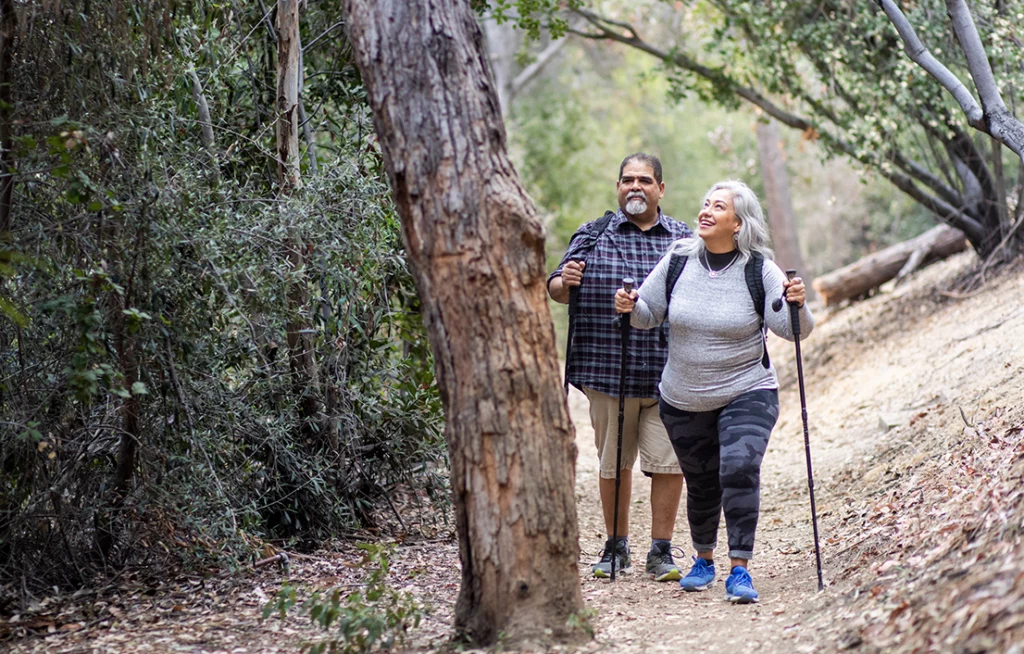
I’m going to describe two different people walking, visualize them, and then tell me (feel free to yell out the answer at your computer!) who is younger.
Person 1: head forward, rounded shoulders, and eyes to the ground, Person 1 takes tiny shuffling steps. You hear his feet scraping against the ground with each step, as he doesn’t have the balance, nor the movement in his ankles/feet, to suspend himself on one leg as the other swings forward. Much of his body is rigid as he goes along in this controlled fall forward.
Person 2: Person 2’s head is lifted and you can see the full length of her spine and power from her core. She moves as though propelling herself through space. There is movement through her hips, knees, ankles, and feet. You notice a buoyancy and confidence to her stride as she freely swings her arms and finds the moments of balance as she transfers her weight effortlessly from one foot to the other.
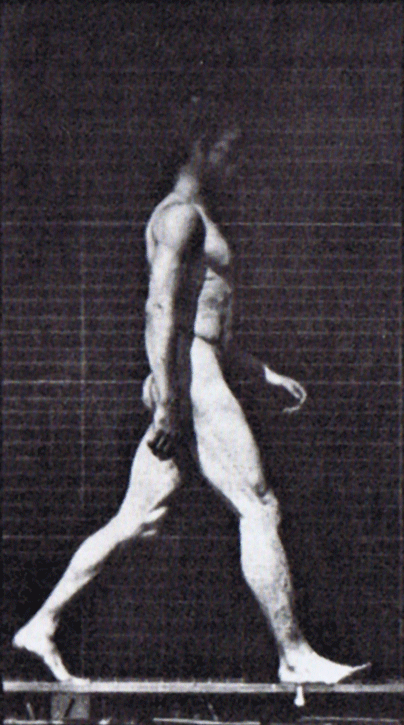
If your answer is the infamous YTU “It depends,” you are correct! While Person 1 is what we might visualize as the typical and eventual image as we age, it doesn’t have to be that way! Continuing, or returning to strong biomechanics of walking is not merely a display of your physical vitality; walking (often and well) can help to offset joint degeneration, breaking hips, circulation problems, mental decline, energy loss, and low moods, all of which we usually associate with aging. In this blog we’ll explore some of the physical and mental benefits of walking, and one aspect of what is needed for proper gait biomechanics.
The most obvious physical benefit to walking is the strengthening of your entire body. Swinging your arms and the cross-crawl pattern (opposite arm and leg move at the same time) helps to tone your arms and core muscles with each step. As you can see with the gait pattern in the first image the glutes, quadriceps, hamstrings, plantar flexors, intrinsic feet muscles, and more are all activated through walking. The joints, specifically the cartilage, are “fed” through movement, as synovial fluid (joint nutrition) and oxygen are pumped through the joint through the positive compression that comes with walking. When we don’t move enough it’s almost like starving our joints, and you know how cranky you get when you’re hungry? Well your joints do too.
Perhaps less obvious are the profound effects of walking on bone health and circulation. Brigham and Women’s hospital in Boston found in their study of post-menopausal women, that 30 minutes of daily walking reduced their risk of hip fractures by 40 percent! In another study of post-menopausal women by University of Colorado at Boulder, they found that one or two miles of daily walking lowered blood pressure levels by 11 points and lowered their risk of stroke by 20 percent.
Of course the brain and the body are intimately connected, and walking has massive effects on the mental decline that we tie to aging. “Many people are passively waiting for researchers to find a magic pill that will stop Alzheimer’s. If I told you we have a way of lowering the risk by 60 percent and it was a drug, it would be the most popular drug going.” This “drug” that Norman Doidge, psychiatrist and psychoanalyst, is referring to is walking! Your hippocampus (responsible for converting short term memories into long term memory) actually grows new cells and becomes larger (Mayo Clinic study) from walking. Doidge explains that to understand why walking elicits such a response by the brain, we can look to our ancestors. “When did animals such as ourselves walk? It was usually when we had to leave the existing environment because of predators or to find food. We had to go to a new environment and, when we got there, we had to explore and learn all about it. The brain may have adapted to anticipate that when an animal goes on a long walk, it will be entering a new environment that it will explore and learn about – hence the brain forms new cells for that task.”
So the question remains: what are the proper biomechanics of gait and how can we help ourselves walk often and vigorously enough to reap all of these benefits? Check back on Friday to learn about the foundation of gait: your feet, and enjoy a great video that will help with the mobility, awareness, and function of your feet and balance.
Enjoyed this article? Read Walking from Philly…to Los Angeles



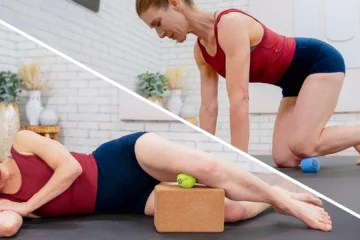
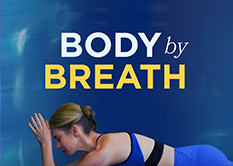



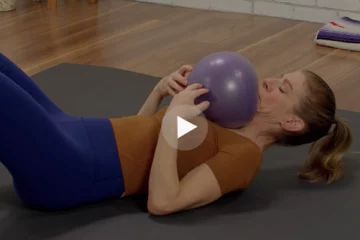
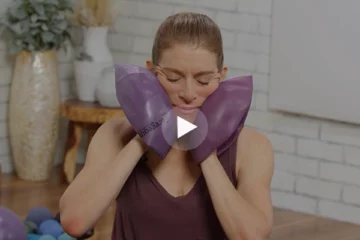


My day would feel like wasted if I didn’t get to spend some time walking. Not only I feel my body more mobile and free but I also get to clear up my mind from the daily stress. Actually, during walks I get to develop some of the best work related ideas and plans.
Great article that reinforces the benefit of daily walking. As a runner approaching 60, I have been balancing running with walking session every week. I used to feel kind of bad about running less, but walking is just so pleasurable, and better than that, my husband will walk with me in the early morning, which we both love. Walking is a little easier on my body, but still gives me all the benefits of weight bearing exercise. Now I know it’s good for my brain, too – bonus!
I recently heard an interview with a female-specific exercise physiologist who made it sound like in perimenopause the only things worth doing are lifting heavy weights and HIIT, so I’m happy to read that walking has been proven to be good for joint health, bone strength, and our brains. I didn’t doubt that the 10,000 recommended steps per day is good for us, but this article helps explains why we should walk, beyond just moving for movement’s sake.
Really interesting information about walking and health as we age. As I approach menopause I’m grateful for the information about walking’s benefits. More than the benefits for menopause a big hooray for decreasing the risk of Alzheimer’s . It sounds like walking (perhaps in proper alignment?) could be the fountain of youth!
Walking is something we do as humans but never really pay attention to it, this article was so interesting and important for anyone who walks! Love the bite size education, so easy to digest! WORTH THE READ!
As a Hanna Somatics educator (HSE), gait pattern underlies all that I do. For us, generating movement from the core and translating to the periphery in the cross body pattern is the natural result of our work. While it’s absolutely true that foot function is critical, I would say that good foot function without good suppleness in the center of the body won’t last.
I like the YTU answer It depends!!! I didn’t know that walking can help to offsetbreaking hips and mental decline. Wow it may reduce the risk of Alzheimer by 60%! This is such an accessible exercise for everyone.
I love this sentence: “When we don’t move enough it’s almost like starving our joints, and you know how cranky you get when you’re hungry? Well your joints do too.” So true for me! I am taking part in a pedometer challenge this month. I am now even more motivated to walk! Thanks for sharing!
Thanks for the information about the benefits of walking. I didn’t know that it could help prevent hip fractures, hight blood pressure, and alzheimers. I agree that if we had a magic pill for Alzheimers we would take it in one second. Walking is such a natural mouvement that is accessible for everyone! Thanks for the reminder of it’s benefits .
Wow I didn’t know about the connection of walking to Alzheimer’s. Thank you
Great info! I love the body mind connection that forms through walking. It has enormous benefits on every level of mind and body.
I am lately being hyper-aware of how I walk and noticing how my feet are slightly uneven with one leg slightly rotated out. It’s a lot of work trying to repattern gait since you work a little harder to evenly load your feet when walking.
Walking is a very powerful way to tie the “X” of the body together through cross-crawl patterning. It’s also significantly enhances the body and mind connection.
Walking is for everyone and one of the best exercises that can be done anywhere. Get out and explore. We have a great park system in our area and I walk with my husband and my friend and her dog many times a week. We see all ages out walking with us, inspiring to see lots and lots of seniors getting their daily exercise in!
I love walking as opposed to running. When i walk, I engage my mind, I think of lots of things, I pray, I say my Mantra, and at the same time, I think of great things that I look forward to for the day and when I get to my workplace, I have all this energy that I didn’t know where its coming from, even though I did not have enough sleep the night before!!!
I knew walking was good for your health but I didn’t know it would also impact the hippocampus thus the memory. This article made me realize how badly I do not want to stop walking. I surely will share the article with my family and friends, thank you.
I love walking. I feel the benefits not only in my body but in centering my mind, a moving meditation. Thanks for sharing all these additional gains.
As a PT and has spent 35 years working with gait, I can tell you 3 things to keep your walking strong:
1. Keep your calf muscles strong, do heel raises daily. The gastric/soles are the power house of walking. These muscles give you the push off for swing phase and the control of your foot when it hits the ground.
2. We need at lest 20 degrees of hip extension with a straight spine. Do daily warriors 1&3.
3. Walk fast. As we age gait speed is considered the 6th vital sign. Keep trucking.
wow, what an impactful article. this makes me want to go hiking more often. i love this. walking is something that we can do into old age and it’ll keep us from old age for a longer period of time if we do it. i had no idea the brain benefits.
I can improve my memory by walking! This is gold! Plus encourage health in my hips? True wealth!
Thank you for the reminder. Until the past ten years, I was always the person out running in the am, going the extra loop on the hike or just generally throwing myself into the wind with a grin. I encouraged everyone to try moving — start with walking! Then I hit my own physical limits. I had to slow down & even for almost a year could barely walk from one part of the house to another. I missed the physical activity on many levels. Now, I’m walking again & hiking & even running the odd mile or so. But I’m still trying to convince myself that whatever I do is good enough — convince myself to listen to the advice my younger self gave others. This article helps! Thank you
I appreciate this blog for two reasons. First, it is a reminder how many physical and mental benefits we can gain from such a simple activity as walking. While many of us can be drawn to “advanced” yoga poses and pushing our body to its limit, there is still so much value in something as accessible, free, and “easy” as walking!
Second, in imagining the two people in the walking scenario, Person 1 in many ways sounded a lot like my 21-month-old daughter! While she doesn’t drop her head and round her shoulders, she is still adapting to bipedal living and you can hear her shuffling and stomping around any part of the house.
I love walking, how great to know it not only is helping to save my joints but my brain! Thanks, Sara for the information.
I had forgotten how great walking can be because I was always to busy running! As I get older I have discovered that to walk is to slow down and appreciate your environment and your breath. Focusing on beneficial form and alignment is also easier while you walk. It’s just a more thoughtful activity. Thank you for this!
It’s always reassuring to hear how something as basic as walking benefits the body in numerous ways. It also seems somewhat miraculous that one can begin exercises at a later age and still reap many rewards.
Yes, great article. People have forgotten the benefits of WALKING! I love walking – everywhere. We have become so accustomed to our cars that we forget we can actually WALK to accomplish many daily tasks. I try to walk to any errands that are less than one mile from my home. I also take a daily walk around my neighborhood – without my phone or headphones! It not only give me a chance to hear my own thoughts (not to mention the birds’ singing), but I can also say Hello to my neighbors. Thank you!
Thank you for reminding us how a simple walk can improve so many things in our body! As a massage therapist I move a lot but I certainly could walk more!
Gréât reminder of the multiple fascets of what walking is about.
What a nice blog ! I like to read about advantages of moving ! So interesting the fact that moving the body has effects on the brain ! Thank you !!!
Walking is so accessible to so many people, and has such profound benefits throughout life! My favorite line is “The joints, specifically the cartilage, are “fed” through movement”. Modern lifestyles have stifled movement through our joints, sometimes extremely so, and we’ve even cultivated a paradigm of prescribing rest and relaxation to tired/strained/aggravated tissue, when in fact I believe sometimes the better treatment is to get the tissue mobilized and (mindfully) active.
In the Netherlands I so now and then organise a so called “Mind-Walk”. It is a combination of walking in the forest with some meditation, awareness and simple exercises inspired by yoga and tai-chi. Since I am doing this, I myself go out walking more often than before and I notice the benefits myself: fresh air, burning calories, feeling fit. Especially when you are getting older: maintain your muscle power, your stamina and your bones by walking. It is free and very easy to do!
At age 65, and a yoga practitioner for most of my life, I’m finding that unless I consciously think about my posture continuously, my head wants to come forward. Long driving trips exacerbate the problem, but as your article explains, walking helps! Thanks so much for the info on walking and all it’s benefits.
Thank you for this summary! I think most people would associate walking with strengthening the entire body and possibly also contributing to bone health and circulation, but not with the profound effects it has on our brain! Prevention of Alzheimer’s and mental decline is a major concern in science and our society, yet often times the main focus is directed to the pharm industry and not what is so obviously in front of us, available to everybody without prescription!!
It’s so sad but true about the “drug” to reduce Alzheimer’s. If it and in a pill it would be consumed by the truck loads. But actually getting your body moving in this way is not nearly as common. It’s so sad. Taking a walk and stepping away from “stuff” has remarkable affect on mood and mental clarity as well as the body. Let s go for a walk right now!
I’ve often found walking is a great way to clear my mind and help me better focus on problems. The suggestion that it helps to reduce Alzheimer’s and dementia would seem logical to me but the fact that it could contribute to as much as a 60% improvement is amazing – we should all be walking, a lot.
The benefit of walking is much more than we think about. Love th idea of walking 30 minutes a day to reduce 40 percents of hip fractures. Adding walking as in your daily routine is a must. We are in a society so get use to convenience. We hop into our car to get to the home to work, yoga studio, supermarket or … We do not really walking that much. With all the reasons and benefit for our bodies, walking is our NEW TREND.
I found this post to be quite informative! I am startled by the statistic of one’s ability to lower their chance of developing Alzheimer’s by 60 percent simply by walking. This is such an accessible activity with fantastic benefit. We truly don’t need to make everything so complicated.
I have been trying to include more opportunities to walk more in my day to day life for over a year now and it does a world of good. I can always trust that my mood will feel lighter after a walk no matter where I am walking or why. I love the fact that something so simple and uncomplicated can reap so many rewards for the body. Convenience is great – don’t get me wrong – but as a culture we take too much advantage of it and are reaping the unfortunate results of diseases of convenience.
This is a great article; especially in a society that is not very movement based. Walking is a simple activity, but with profound benefits. I encountered a yoga teacher that said he liked to watch people walk in New York City and figure out what was going on anatomically which affected the way they walked. Although a routine activity even, many people can benefit by treating it purposefully and mindfully. Paying attention to core and breath regulation come to mind for me anyway.
I’ve been walking to avoid the blues since I was teenager, thank you for explaining why.
When I read the post , I remembered my PhysEd teacher repeating – walk/run with your arms. At that time I thought it gives you speed, apparently not only.
Thanks for the post.
I recently completed a yoga tune up workshop as part of my RYT training, and know all too well that the phrase, “it depends!” is applicable to many situations. I must admit, when I first read the post, I was envisioning the first person as the older of the two. The implication of “it depends” is a great reminder that age doesn’t have to dictate physical vitality. I’m an avid walker and I enjoyed learning how walking benefits the whole body from toning muscles in the arms, legs and core to joint health.
I’ve been practicing mindful walking lately observing my muscle imbalances and noticing the difference of positioning right and left foot while stepping.
Walking is a daily activity for me. I feel awake and free while strolling, also grateful for my useful legs and feet. Our very species is designed to walk! I am going to try to be more conscious of my cross-crawl pattern during my daily walks to help strengthen and “feed” my joints more effectively.
So cool, Sara! It blows my mind when I consider the forces that strengthen our bones, muscle contraction and gravity. Our health is directly related to the curvature in the space-time continuum (Einstein’s explanation of gravity). Everything is connected!
P.S. In addition to walking, activities like taking the stairs (instead of the elevator), jumping for joy, playing tennis, and dancing also strengthen bones.
That´s why I love walking. Very interesting I never thought, that it has such positiv impacts of my body and brain.
Brilliant, interesting and informative! all the things I crave in a blog post!! cool!
Never underestimate the power of walking! Awesome article, great references and examples. I particularly enjoyed learning about how post-menopausal women can reduce their risk of hips fractures by 40% just by walking 30 minutes a day. I will definitely tell my clients!!
Great article! I love to walk and my ability was greatly disrupted for a long period of time from injuries and poor medical responses. I’m finally getting my groove back and am starting to see the many benefits again. I really enjoy the education you provide, ie: the cross crawl patterns.